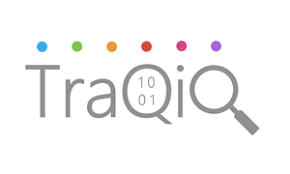Rapid technological advancements in the coming decade will result in disruptive developments in the insurance business. Carriers that employ new technology to build novel solutions, harness cognitive learning insights from new data sources, streamline processes and cut costs, and meet customer expectations for individualization and dynamic adaptation will be the victors in tech-based insurance.
While most organizations did not likely invest extensively in disruptive technologies during the pandemic, the increasing emphasis on digital technology and a stronger openness to embracing change will place them in a better position to integrate tech into their operations.
How insurers can prepare for accelerating changes:
The industry’s rapid transformation will be powered by the widespread use and integration of automation, deep learning, and external data ecosystems. While no one can foresee what insurance will look like in the future, carriers may start preparing for the change now.
1) Learn about AI-related technologies and developments.
Although the industry’s seismic shifts will be technological, resolving them is not the responsibility of the IT team. Instead, board members and customer-experience teams should devote time and resources to developing a thorough grasp of these AI-related technologies.
Insurers, for example, are unlikely to gain much information from small-scale IoT pilot projects in separate segments of the organization. Instead, they must move with intent and a clear knowledge of how their company can engage in the IoT ecosystem at scale.
2) Create the necessary talent and technological infrastructure.
The next generation of successful frontline insurance workers will be in high demand, and they will need to be a unique blend of technologically adept, creative, and willing to work at something that will not be a static process, but rather a mix of semi-automated and machine-supported tasks that will constantly evolve.
To keep up, an aggressive plan for attracting, cultivating, and retaining a diverse workforce with vital skill sets will be required. Data engineers, data scientists, technologists, cloud computing professionals, and experienced designers will be needed among those employed.
3) Create and begin implementing a well-thought-out strategic plan.
Carriers must select how to employ technology to support their business plan based on the insights gained from AI explorations. Some carriers are already experimenting with novel techniques, such as establishing their venture capital arms, purchasing potential insurtech startups, and forming alliances with top academic institutions.
Insurers should create a perspective on the areas in which they want to invest to match or beat the market, as well as which strategic approach—for example, founding a new business or building in-house strategic capabilities—is best suited for their organization.
4) Develop and implement a thorough data strategy.
Data is quickly becoming one of, if not the, most significant assets for any firm. The insurance sector is no exception: how carriers identify, assess, place, and manage risk is all dependent on the volume and quality of data they collect throughout the life cycle of a policy.
Carriers should be prepared to implement a comprehensive procurement approach that may include direct acquisition of data assets and providers, licensing of data sources, usage of data APIs, and collaboration with data brokers.
How can TraQiQ help?
At TraQiQ, we are well-versed with emerging technologies like AI, Analytics, Machine Learning, and Blockchain. Based on client needs and requirements for various domains, we can assist you in selecting the best option for your company and advancing it to the next level of its digital transformation ladder. For more information regarding our services please contact us.



